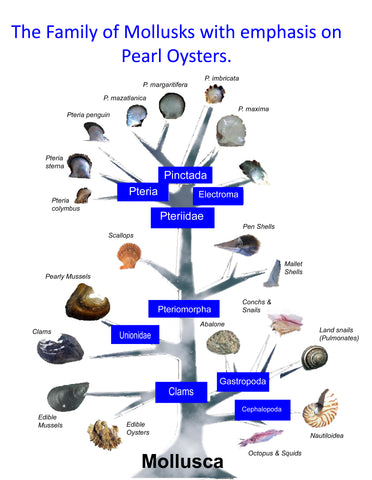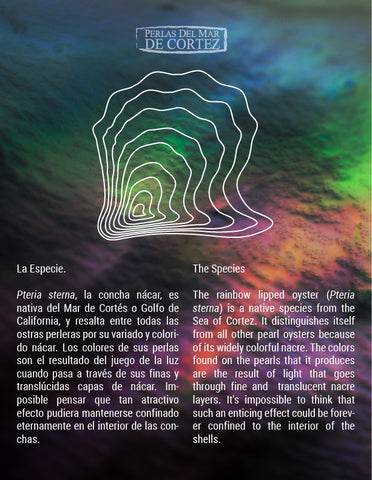We will talk a little about the biology of pearl oysters (family Pteriidae) since many people confuse these animals (yes, they are animals) with plants or even with alien life forms since they cannot discern the organism's basic structures.
These animals have a mouth, an esophagus, a stomach, lots of gonad tissue (testes or ovaries), gills, a kidney, a hepato-pancreas (a combination of liver and pancreas) and even an anus. They even possess very primitive sensorial organs like ocelii (primitive "eyes") and chemo receptors (the equivalent of a sense of smell, sort of speaking). With that in mind we can now proceed.
Pearl Oysters belong to the family of "Winged Oysters" (Pteria in Greek means "wing"), whose closest relatives are "Scallops" (Pectinidae, like the "coquille de Saint Jacques") and "Pen Shells" (Pinnidae). Edible oysters (Ostreidae and Crassostreidae) are not close relatives of Pearl oysters.

The family of Pearl Oysters belongs to the Mollusca (mollusks), an order of soft-bodied invertebrates that -most of them do- have a hard calcium carbonate shell. Examples of these are the Snails or Gastropods (includes the "Abalone" (Haliotidae), any kind of snail, and the "sea slugs" (nudibranchs), the Squid/Octopus group (Cephalopods) and the Clam/oyster/mussel group (Bivalves). Pearl oysters belong to the latter group.

